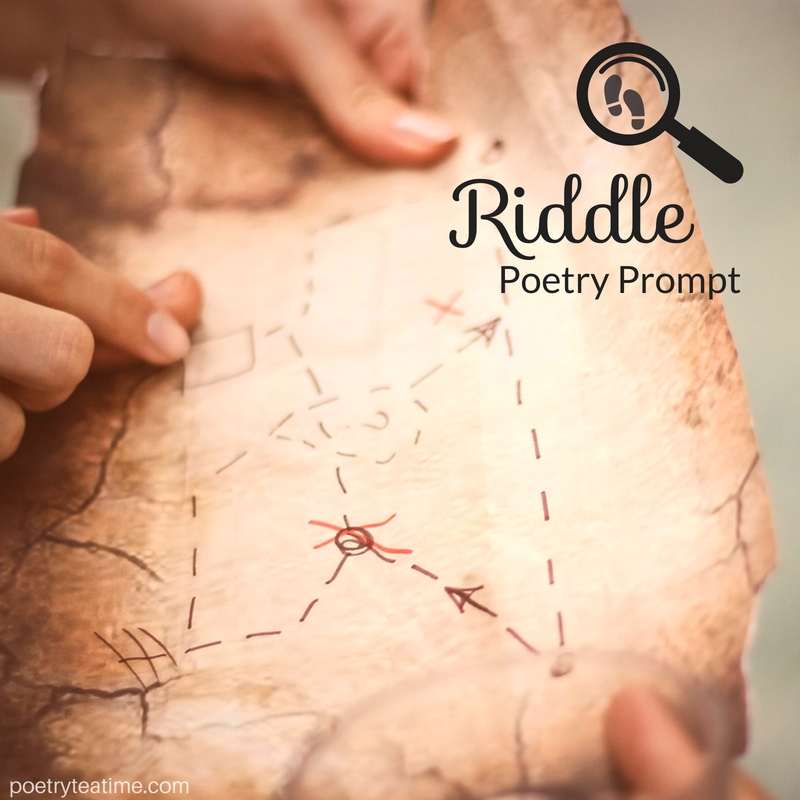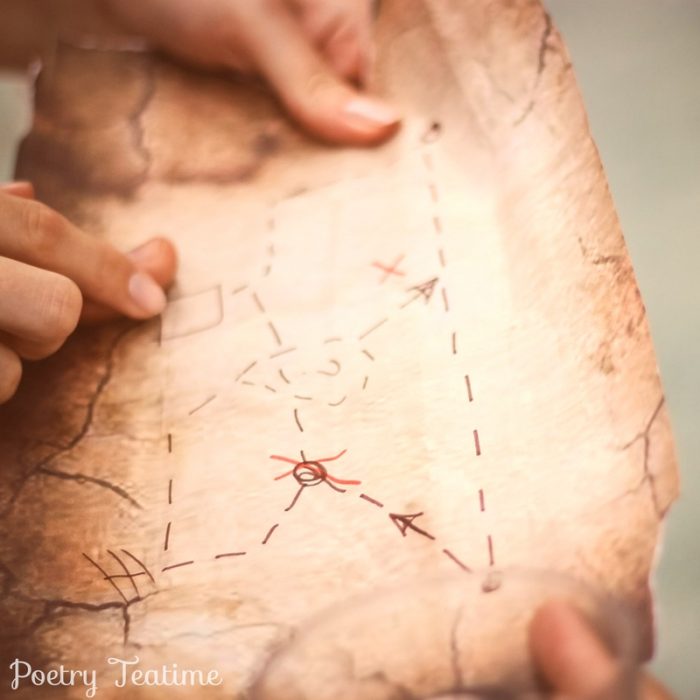In today’s poetry prompt, get ready to stretch your mental muscles! You’ll be playing guessing games, solving puzzles, and creating poetry riddles of our own. So be prepared to put your brain to the test!
[This post contains Amazon affiliate links. When you click on those links to make purchases,
Poetry Teatime receives compensation at no extra cost to you. Thank you!]
Before you create your own riddle poems, give yourself the challenge of solving some poetry puzzles for yourself. Here are some great riddle poetry books to get you started:
- Riddle-lightful: Oodles of Little Riddle-Poems, by J. Patrick Lewis (silly and funny poems with riddles to solve)
- When Riddles Come Rumbling: Poems to Ponder, by Rebecca Kai Dotlich (guess riddles and puzzles in rhyming poems)
- Edgar Allan Poe’s Pie: Math Puzzlers in Classic Poems, by J. Patrick Lewis (read these parodies of classic poetry that double as mathematical puzzles for some wacky poetic and mathematical fun!)
- Butterfly Eyes and Other Secrets of the Meadow, by Joyce Sidman (solve riddles in poetry)
- Touching the Distance: Native American Riddle-Poems, by Brian Swann (guess what each poem is about, with answers at the back of the book)
Now that you’ve practiced solving puzzles and reading riddles, it’s time to create your own riddle poetry.
First, though, you’ll want some practice. To begin, pick a simple household item. Write down a description of the object without naming it. Then, try to see if other people can guess the object based on your description. Get creative with this and make your descriptions as wacky and disorienting as possible!
Once you’ve practiced with basic items, it’s time to choose a subject for your riddle poem. It can be anything, from your favorite book or TV show to a color or a holiday. The more complex the idea is, the trickier it will be to write your riddle.
Next, visualize and describe the subject you’ve chosen. Be sure to use lots of sensory details and images so that your readers can smell, hear, or see the object, story, or idea. If you’re ready to write your description as a poem, go ahead and do it! Otherwise, you can freewrite your description, then arrange it in lines as a poem.
Get one person to read your first draft. If they guess the object easily, write another draft. Include fewer details or descriptions. Try focusing on just one image or part of the story rather than the whole thing. Ask for more readers until you’re sure your poem is a difficult puzzle to solve!



